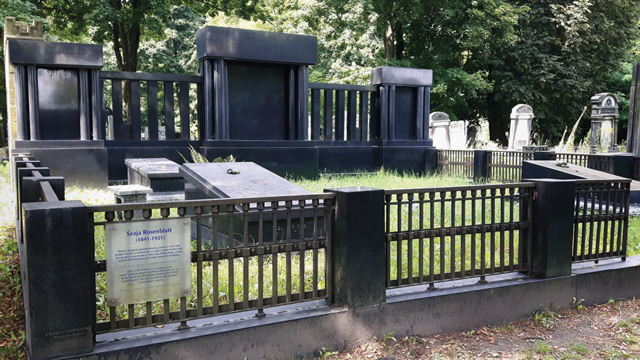POZNAŃSKI’S LAST PALACE 1

Łódź is today the third-largest city in Poland in terms of population, but two hundred years ago it had only a few thousand inhabitants. The main driver of the city’s dynamic development was the industrial revolution, which gathered rapid pace in the second half of the nineteenth century when ambitious entrepreneurs built their large factories employing masses of workers.
One of the richest manufacturers in this period was Izrael Poznański, who was one of the “Cotton kings” of Łódź. His legacy can be encountered, for example, during weekend shopping at the Manufaktura shopping centre, which was built on the premises of a Poznań factory between the streets of Drewnowska and Ogrodowa. The building has undergone extensive renovation, but Lodz’s industrial climate still lives on in crude post-industrial buildings made of unplastered red bricks.
There are many stories and anecdotes about the life of Poznański. It is said that he moved the clocks back half an hour to extend the working day and pay workers the lowest possible wages, and there were constant accidents in his factories. It is not entirely clear what is true about these rumours, but we do know that in the later years of his life he was very involved in charity and philanthropy, supporting the development of schools, children’s homes and hospitals. He even co-financed the construction of the Church of St. Alexander Nevsky, for which he was awarded the Order of St. Stanislaus.
He was also the investor of the land for the New Jewish Cemetery in Bracká Street, which was founded in 1892 when the former Jewish cemetery on Wesoła Street (now called the “Old Jewish Cemetery”) was full and there was a need to build a new one. The owner of the factory agreed to donate money on the condition that his grave would be the largest. For this purpose, he reserved the right to an area of approximately 1,000 square metres where a family mausoleum was to be built. Some claim that Poznański personally approved the design of the tomb, violating Jewish tradition, which forbids the preparation of burial during life. The authorship of the design is usually attributed to the architect Antoni Zeligson who was closely associated with the Poznański family.

The Poznański Mausoleum is hard to miss, as it is a real landmark of the entire cemetery. Bad tongues call it “The Palace of Poznański”. And not without reason, because it is the largest Jewish tomb in the world. The building reaches a height of up to fifteen metres and was built of light grey granite (probably Strzegom granite) on a circular plan with a base diameter of about 14.5 metres. The stone dome of the tomb is supported by four huge columns and eight columns over 5 metres high, and at its base has the bronze inscription POZNAŃSKI.
Until the 1980s, the mausoleum was also decorated with ornaments in the shape of wreaths and laurel leaves, which were dismantled during reconstruction work forced by the tomb’s disrepair. Already during the First World War, the monument was hit by artillery ammunition and during the Second World War it was shelled by machine guns.
Source: Kurier kamieniarski
Author: Jakub Zdańkowski | Published: 24 March 2019
